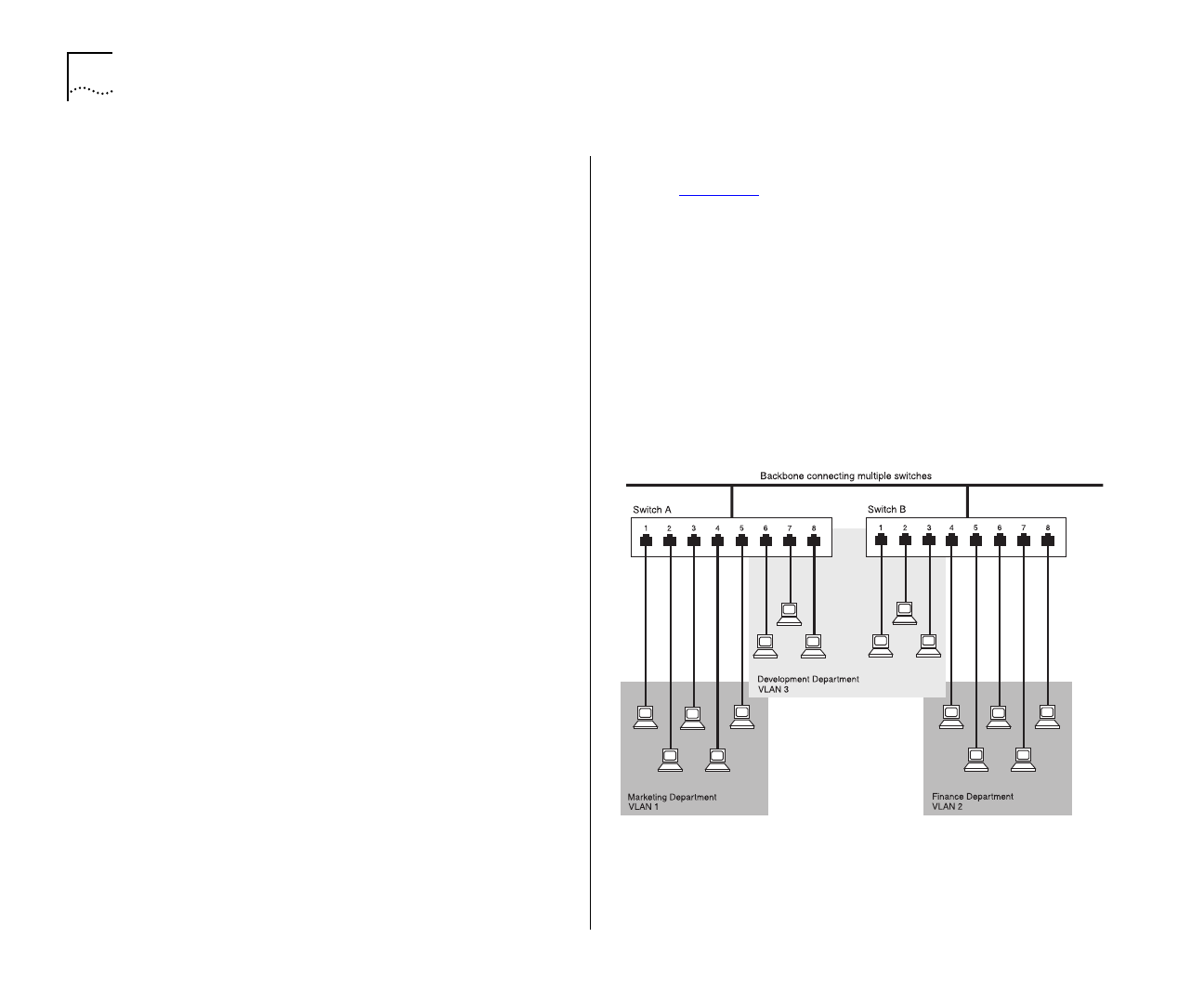
5-2 C
HAPTER
5: A
DVANCED
M
ANAGEMENT
How VLANs Ease Change and Movement
With traditional IP networks, network administra-
tors spend much of their time dealing with moves
and changes. If users move to a different IP subnet,
the IP addresses of each endstation must be
updated manually.
With a VLAN setup, if an endstation in VLAN 1 is
moved to a port in another part of the network,
you only need to specify that the new port is in
VLAN 1. This is something that can be done auto-
matically if you have 3Com’s Transcend
®
Enterprise
Manager for Windows (v6.0 and above).
How VLANs Control Broadcast Traffic
With traditional networks, congestion can be caused
by broadcast traffic which is directed to all network
devices whether they require it or not. VLANs
increase the efficiency of your network because
each VLAN can be set up to contain only those
devices which need to communicate with each
other.
How VLANs Provide Extra Security
Devices within each VLAN can only communicate
with devices in the same VLAN. If a device in
VLAN 1 needs to communicate with devices in
VLAN 2, the traffic must cross a router.
An Example
Figure 5-1 shows a network configured with three
VLANs — one for each of the departments that
access the network. The membership of VLAN 1 is
restricted to ports 1, 2, 3, 4, and 5 of Switch A;
membership of VLAN 2 is restricted to ports 4, 5,
6, 7, and 8 of Switch B while VLAN 3 spans both
Switches containing ports 6, 7, and 8 of Switch A,
and 1, 2, and 3 of Switch B.
In this simple example, each of these VLANs can be
seen as a
broadcast domain
— physical LAN seg-
ments that are not constrained by their physical
location.
Figure 5-1
The concept of VLANs


















